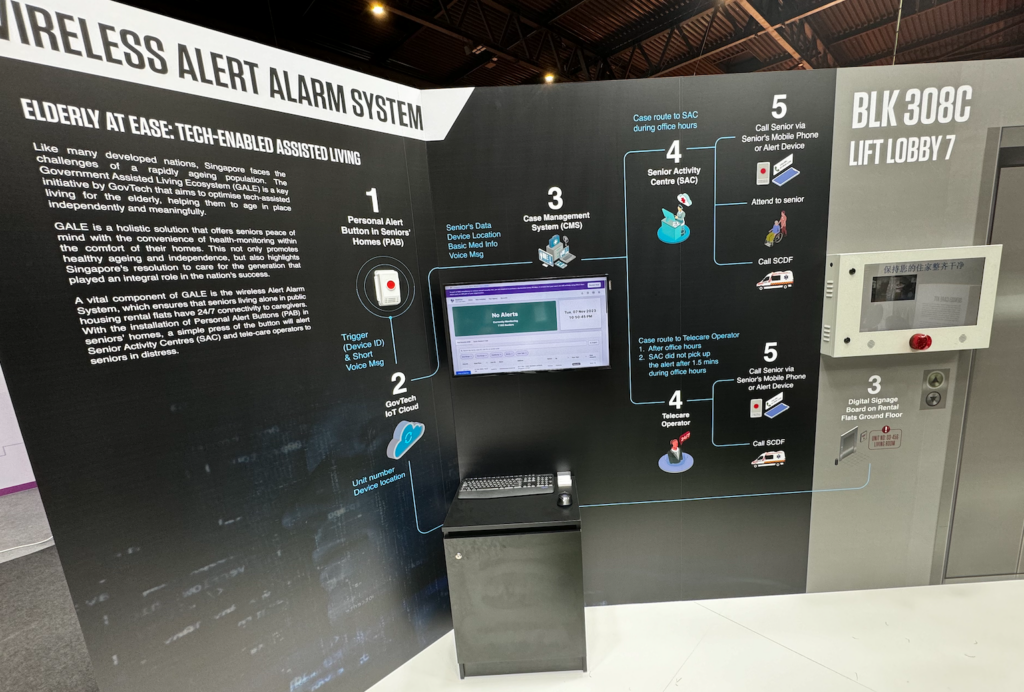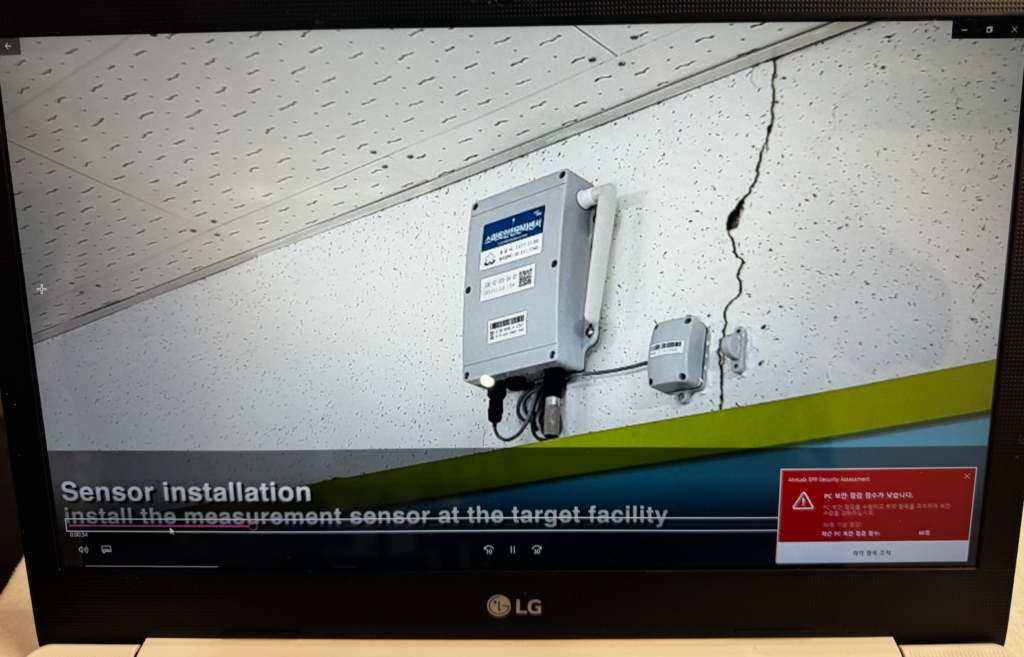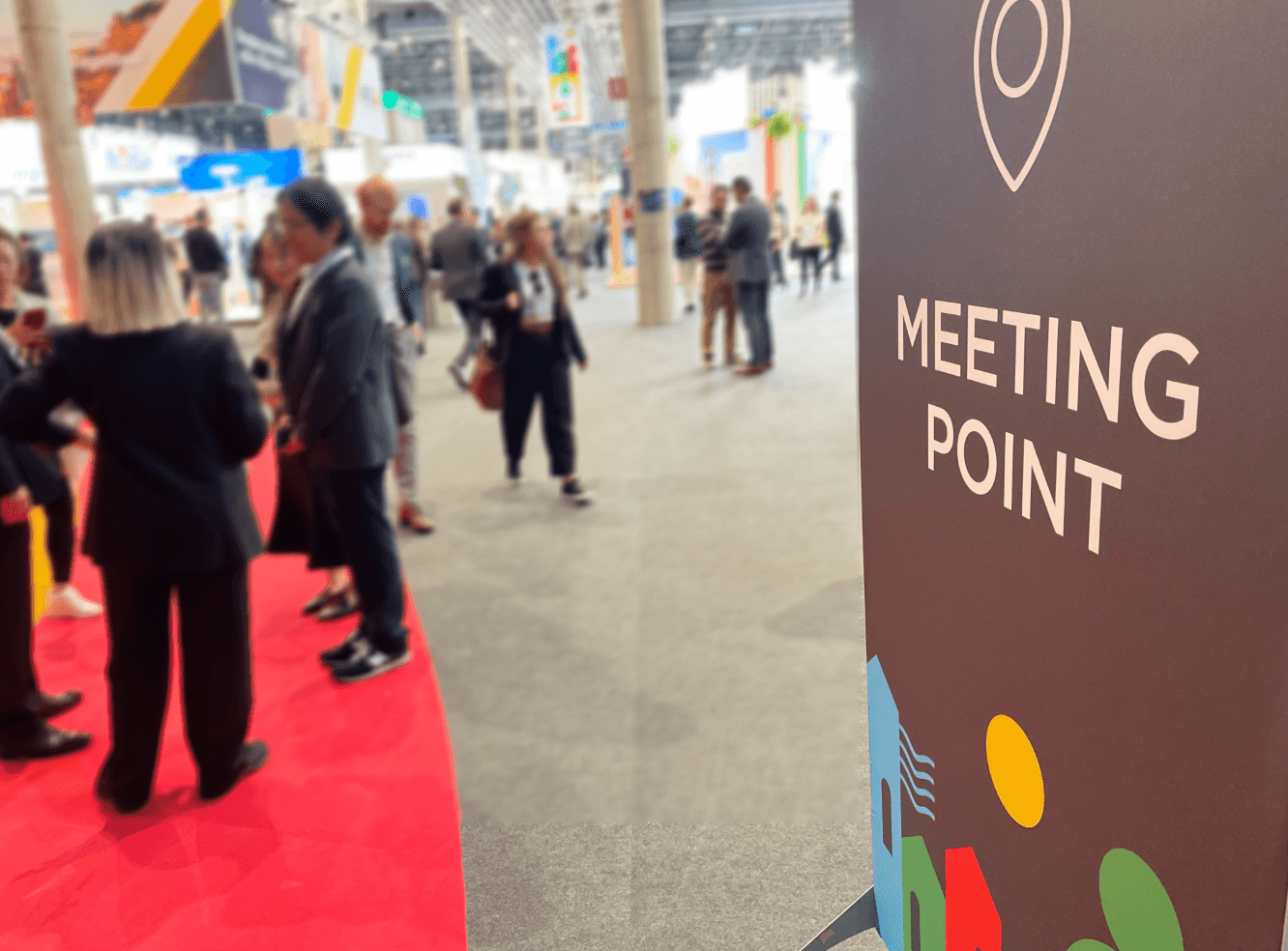How smart are cities in 2023?
This year’s Smart City Expo event in Barcelona was much larger than last year, and it feels like the offerings have evolved a lot.
Björn Hagström took the pulse of several cities at the Smart City Expo in Barcelona, such as Kyiv, which offers an app that provides notifications of air raid alarms, can show available parking spaces, and even allows you to buy tickets for local public transport. In this blog post, he also writes about which players were represented and who should have been there.
The Nordic/Baltic pavilion was at least 50 percent larger, and the same can be said for the expo as a whole. This year, Stockholm had partnered with Oslo and Helsinki. Copenhagen was unfortunately missing in action, but Local Government Denmark (KL) (Denmark’s equivalent of the Swedish Association of Local Authorities and Regions (SKR)) was present. There were 140 Swedes in the delegation plus a number who travelled down on their own or in collaboration with others.
Considering the large number of Swedes, it was very surprising that SKR was not in attendance. SKR has digitalisation as one of its three focus areas going forward, so I really hope they will take part in the future. Smart cities should be a main focus for them.
Schools and health and social care were absent
Worth noting at this year’s Smart City Expo was that education and health and social care, which are major areas of activity for cities, were largely absent among the exhibitors. Even though they have their own expos, they should have also been represented here to a greater extent.
China had one of the largest stands at the expo, but it was largely empty of both visitors and exhibitors/representatives. This resulted in some strange vibes around the whole exhibit stand.

Asking questions to the cities
Once again this year, I tried to talk to as many cities as possible and ask them some questions. It was more challenging this year, as the number had grown from 22 to 45 cities. The questions I asked were basically the same as last year:
- What are your most successful IoT or smart city solutions?
- What impacts have you achieved?
- Have you measured the impacts and do you have measurement figures?
- What are your biggest challenges in the next 1–2 years?
Systematic impact capture is missing (but not in Stockholm)
Last year there was a clear trend – almost everyone was working with testing and PoCs, and had no idea about the impacts. The exceptions were Stockholm and Helsingborg. There is a slightly different story this year. There were more cities working on defining their goals and needs and measuring the impacts they achieve. Stockholm and Helsingborg were still shining stars in the smart city sky, but they were no longer alone.
In terms of barriers, almost all cities highlighted funding. The exception was Riyadh, which for some reason did not see any difficulties in finding money. Almost all of them lack a systematic way to capture the impacts of new solutions so they can reinvest in more change projects. Stockholm is a good exception, and more cities should start this process in order to achieve long-term sustainable digitalisation.

How the cities responded
Stockholm
This year, Stockholm highlights the work done by Skolfastigheter i Stockholm AB (SISAB) on energy efficiency in school buildings. There are a lot of figures on energy efficiency here. Note that they have not only measured the impact achieved, but also “captured” the money and can invest it where it is needed. Very well done!
Stockholm also sees great potential in a new sewerage maintenance project that moves from physical visits to cameras or microphones to identify problems.
One fun project is the use of drones to combat Canada geese, which are an invasive species. These are now being identified by drones that also use warning sounds to repel them in the water and away from beaches and people. The test was so successful that when SVT (the Swedish Television), came to do a report, there were no birds around to demonstrate the solution.
The challenges ahead, apart from funding, are that the city is restrictive with cloud services.
Helsingfors
Helsingfors has seen good impacts for businesses related to mobility with traffic flows and safety. A new area is urban air mobility, as drones are becoming increasingly greater and more important elements in the urban environment. The city is monitoring businesses that build services on their data, and the best and most successful ones are growing and thriving.
Helsingborg
In Helsingborg, smart lighting continues to be the major focus and will be for a number of years. The new lighting also creates a mesh network for IoT with different technologies depending on needs. Flexible luminaires with two connections for accessories create great opportunities for the future. The goal was to save 60–70 percent in energy, and the result so far is 86 percent.
Tampere
Tampere has exciting work underway involving measuring and predicting movement patterns. This is used, for example, to make it easier for restaurants to staff correctly and mobility solutions to be in the right place at large events with lots of people. They are in an early launch phase now. One challenge is to get everyone to realise the benefits and value of working with IoT.
Budapest
Budapest is looking for solutions with ROI within a year, as funding is a major challenge. Smart parking is a priority area where they are trying to discourage long-term parking and encourage more transport via carpools and similar solutions. There is a lot of work on inclusion, such as participatory budgeting.
Tokyo
Tokyo has made a long-term effort to reduce water leakage in the water system from 30 to 3 percent. However, this is pretty much traditional “dumb city” work, replacing lead water pipes and manually listening to the pipes.
Tsukuba
Tsukuba offers the possibility of teleworking through physical robots. People with disabilities can work in a café, for example. The project is in the start-up phase.
Dallas
Dallas has multi-sensors that both read number plates and create a public Wi-Fi network. They are also using vehicles to inventory assets, such as the quality of roads and other neighbouring infrastructure. This takes place too infrequently, and solutions are being sought to speed up collection.
In addition to funding, legal barriers are a challenge.
Jersey
Jersey is another city that has no trouble with funding. They have sold an IoT company to Velos for GBP 400 million and received GBP 20 million to reinvest in digitalisation and innovation with a focus on mobility. They are basically venture capitalists here.
Fort Worth
Fort Worth is a port and transport hub. They intend to digitalise the port with a digital twin and increase the throughput of goods by 50 percent when moving goods from boat to vehicle. The digital twin will ensure that there is a driver in the right place at the right time to receive a load. No unnecessary queues and always a vehicle in place when needed. The project will be completed within 18–24 months.
The city is also the fastest-growing in the USA, and has growing pains with a housing shortage and traffic problems. They see digitalisation as part of the solution.
Kyiv
Kyiv highlights its app, which has been downloaded by 2.6 million people – practically all of the adult residents. It provides notifications of air raid alarms and other things that are unfortunately part of everyday life for the citizens there. The app is the gateway to the city for finding parking and buying public transport tickets, and additional services are being added all the time. Digital ticket sales have not only made it easier for customers, but have also increased revenue by 20 percent by reducing corruption. Previously, tickets were sold physically by people at the stations. EID is built into the solution.
Sunderland
Sunderland is investing in self-driving vehicles that run on certain routes, such as between the city centre, the university and the hospital. They also provide free Wi-Fi, which has been very important for vulnerable groups in society. An evaluation and figures are available on their website.
Singapore
Singapore had a large exhibit stand and presented interesting solutions. However, their societal model often makes it challenging to scale their thinking to others. In response to a direct question, they say they have to work with the consent of citizens to collect and process personal data.
One solution they presented was a personal safety alarm for the elderly. It was currently a button on the wall, but in the next phase they are investigating wearables. The exciting aspect of the solution was that in the first stage the alarm is sent to a screen out in the corridor, where neighbours and acquaintances can see it and act as local support. It is then escalated in different steps to a central alarm centre that takes action. The alarm provides information about the person’s health status and the ability to talk to the sick person via microphone. The solution is currently installed in 10,000 households.
They are also looking at using radar to detect cases of abnormal state of health and death in order to send alerts.
Another solution they presented was a digital twin of public transport. This is particularly exciting for them, as anyone can then start driving a bus however they please without a special licence. This is a solution that feels very far removed from the bureaucracy here in Sweden. It is important to realise how different the conditions are in different parts of the world.

Riyadh
Riyadh uses cameras to detect factors such as litter, graffiti and lack of road maintenance that require action using camera-based solutions. The solution is new, and they do not yet have figures on how effective it is. All data is collected nationally from all cities and regions at the discretion of the national authority, creating a high degree of interoperability since they control the data formats.
Putrajaya
Putrajaya is working with lighting, public signs, train system monitoring and water quality in lakes. 480 surveillance cameras are connected.
Toulouse
Toulouse is testing smart lighting for security and evacuation of a theatre. The monitoring of air quality at an innovation centre is another project.
Seongnam
Seongnam has a large number of old buildings with cracks that are monitored with sensors. If the cracks get bigger an alarm is triggered, enabling evacuation before a disaster occurs. This has been in place 1–2 years, but no alarm has been triggered so far.
The city also runs a drone service that can be used by restaurants and businesses. You can get delivery to the suburbs or to parks, but not in the city centre today. In the park, for example, you can order food for your picnic. There are 10–30 orders per day, depending on the weather. I asked about problems with noise, but they claimed it was not a problem since there is so much noise in the city anyway.

Curitiba
Curitiba has converted an old landfill into a solar park that supplies 30 percent of the public buildings with electricity. They struggle to find solutions they can adapt to local conditions.
Lisbon
Lisbon has challenges with data quality to work with data-driven decision-making.
Porto
Porto showcased its platform for collecting and visualising data. Potholes are reported by phone and entered into the system, which provides a real-time picture of the situation. They have calculated and quantified the benefits generated. There are challenges in managing data and creating benefits and impacts from it.
Wetzlar
Wetzlar is focusing on democratic aspects with participation and inclusion. It wants to reach weak and silent groups, and create a culture of participation in the city.
There will be a lot of construction in the future, and they are looking for smart learning solutions.
Karlsruhe
Karlsruhe has pilots on measuring temperature and humidity in the zoo, where different zones have specific needs for animals and plants to thrive. They are using sensors from Treesense to measure health status and implement the right measures in time.
Munich
Munich is working on 3D visualisation of construction projects to get more and, above all, better feedback from citizens before the start of construction projects.
——————-
Written by Björn Hagström
Björn runs a network within the IoT Sweden project Smart City Lab and has experience from several projects within IoT. Björn also works a lot with information management in general with a focus on open and shared data.
